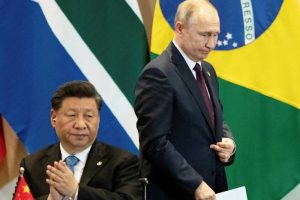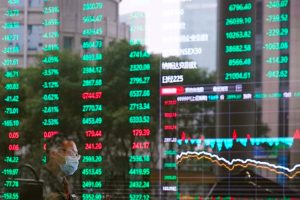Investors frustrated by low yields in developed markets should consider the relative strength of Emerging Markets, which offer growth potential, resilience, attractive valuations and a degree of differentiation
Persistently low yields from traditional developed market bonds, alongside maturing emerging economies, is making emerging market (EM) debt look particularly attractive for global investors right now. Combined with a confluence of emerging market strengths, perhaps now is the time to take a second look at EM debt.
But what are the key drivers behind their market strengths, and why is now the time to invest?
Drivers behind Emerging Market Debt
The relative strength of EM debt stems from four powerful drivers.
The first is growth potential. Emerging economies not only account for a larger share of global GDP in purchasing power parity terms than developed economies, they continue to benefit from secular growth drivers such as relatively young populations and growing middle classes.
Second is the resilience of emerging market economies through the Covid-19 crisis. While certain countries struggled with Covid-19 infections, several reopened earlier or were simply less impacted by coronavirus – leaving them in good stead to return to trend growth.
Third is attractive valuations in comparison to expensive US equities and debt.
And last but not the least is the growing scope and degree of differentiation in the EM debt universe, covering a wide array of risk exposures.
When combined, these four factors make emerging markets particularly attractive to bond investors relative to developed markets as they emerge from the pandemic.
Debt on the horizon
And it’s not just the current lay of the land that is looking positive for EM debt. In some key emerging markets, other idiosyncratic factors come to the fore, too.
In China, the world’s largest emerging economy has led the global economic rebound. While it was the first country to witness the spread of Covid-19 within its borders, China’s early initiative to lock down parts of its economy also positioned it to be one of the first economies to recover. This year, real GDP growth in China is likely to be between 8-9%.
Even in India, where a sharp rise in Covid-19 cases and renewed lockdowns over the past few months remain key risk factors, the rebound from the depths of the Covid-19 contraction has been impressive. GDP growth for the second largest emerging economy should still exceed 10% in the 2021–22 fiscal year.
Collectively, emerging markets are on a strong footing in 2021, especially when compared to previous economic recoveries. This is based on three further factors:
- Emerging market currencies are not expensive, multilateral trade is improving, and emerging markets have stronger external balances, which makes them less dependent on foreign capital than during previous downturns;
- The spread in real yield between EM debt and US Treasuries is higher today than in comparable stages of previous market cycles;
- Low to negative real rates in developed markets are creating demand for assets that can provide additional yield.
Interest rates and inflation
If these longer-term factors and future growth outlooks were not compelling enough, the prudent approach of emerging market central banks to monetary policy in light of the pandemic is encouraging.
Interest rates were cut adequately to loosen credit conditions, support growth, and prevent financial stress without stoking excessive inflation. Equally as promising, with the V-shaped turn in the global growth cycle, emerging markets have put rate cuts on hold, in some cases even adjusting rates higher to reduce inflation risk while still fostering growth, such was the case in Brazil and Russia.
And while the topic de jour in developed markets is undoubtedly creeping inflation and its impact on financial markets, inflation in emerging markets remains low versus trend, giving their economies room to absorb the ongoing cyclical rise in inflation without having to put either monetary or fiscal policy in restrictive territory. Indeed, we do not expect significant tightening in any of the leading emerging economies such as China, South Korea, Taiwan, and India.
On the other hand, exposure to the commodity producing countries in emerging markets provides an opportunity to pick up yield and even hedge against inflation risk.
No ‘Taper tantrum’ sequel
Discussion of interest rate rises may focus minds back to the US Federal Reserve’s signal in 2013 that it would gradually reduce quantitative easing. This led to a rapid selloff in global stocks and bonds, the spectre of which looms large over EM debt investors today.
However, we believe a sequel to the 2013 “Taper Tantrum” is unlikely, even if monetary policies tighten further. At present, local-currency-denominated EM debt remains relatively under-invested in, and the global economy remains in the middle of a strong growth and rebound cycle. Add on to that the fact major emerging markets are currently running smaller current account deficits, have larger reserves to defend their respective currencies, have stronger fiscal and monetary policy frameworks, and have currencies that are cheaper in real terms. Equally important, real interest rates remain deeply negative in the US and other developed economies.
Risks remain
That’s not to say there are no risks from EM debt. Investors should be prepared to face higher volatility while investing into EM debt. Several key risks that exist today are the possibility of disappointing growth following the highs of 2021, a sharp change in US Federal Reserve policy, the potential of policy mistakes ahead of elections in some emerging countries, or the possibility of faster rising inflation.
But when offset by the combination of favourable macroeconomic conditions, the reasonable economic responses of emerging markets to the pandemic, their undervalued currencies, and their secular growth drivers, EM debt does present opportunities that can be exploited using active management skills.
ALSO SEE:
Strong investment case brewing for emerging markets in 2021























